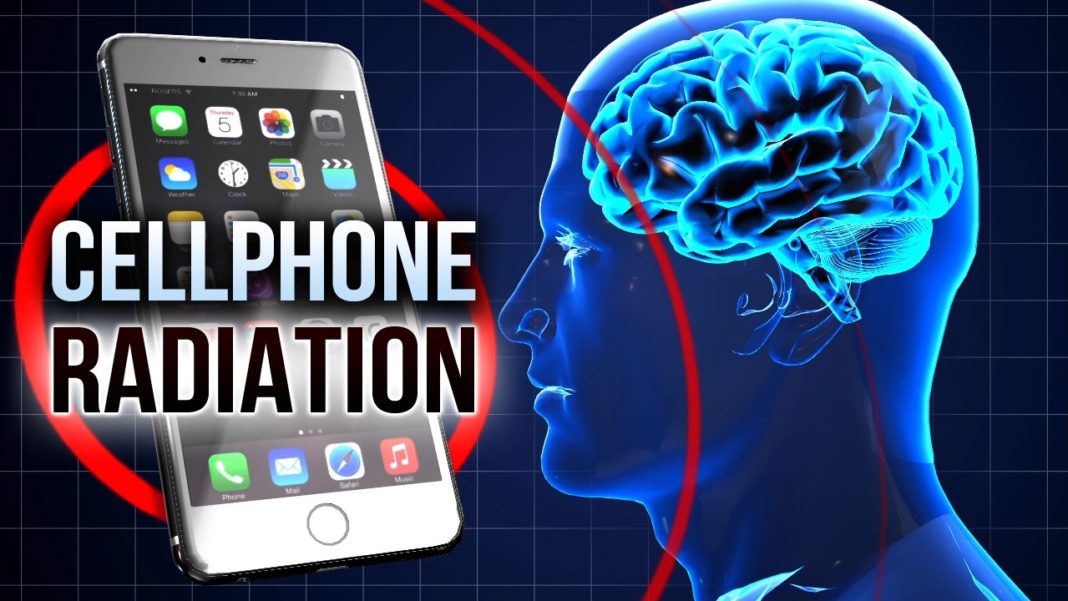Cell phones have become an unavoidable part of our lives, providing ease in many cases but there is something alarming about; Most of us know that cell phones can cause cancer and other health problems. There are three major reasons why people are concerned about this:
- Cell phones emit radio waves, a form of non-ionizing radiation, from their antennas.
- The number of cell phone users has rapidly increased. According to the Cellular Telecommunications and Internet Association, there were over 327.5 million cell phone subscribers in the U.S as of December 2014.
- The number of cell phone calls daily, the length of each call, and the amount of time people use their phones have increased.
Back in 1996, the FCC created guidelines on cell phone radiation (RF) exposure with input from the Food and Drug Administration (FDA), the Environmental Protection Agency (EPA), the National Institute for Occupational Safety and Health (NIOSH), and the Occupational Safety and Health Administration (OSHA).
The guidelines created a measure of the rate that body tissues absorb radiation during cell phone use, known as specific absorption rate (SAR). The specific absorption rate for cell phone radiation was set at maximum 1.6 watts of energy absorbed per kg of body weight. This limit was set because of the thermal effects of cell phone radiation, not to diminish other biological effects that this type of radiation has, such as cancer or DNA damage.
The charts below list SAR levels for Samsung Galaxy S, Apple iPhone, as well as 20 of the highest SAR level cellphones and 20 of the lowest SAR level cellphones.
Samsung Galaxy S Radiation Levels
| Cell Phone Model | SAR Level |
| Samsung Galaxy S8 | 1.55 |
| Samsung Galaxy S7 | 1.59 |
| Samsung Galaxy S6 | 1.25 |
| Samsung Galaxy S5 | 1.47 |
| Samsung Galaxy S4 | 1.18 |
| Samsung Galaxy S3 | 0.87 |
Apple iPhone Radiation Levels
| Cell Phone Model | SAR Level |
| Apple iPhone X | not yet available |
| Apple iPhone 8 Plus | 1.19 |
| Apple iPhone 8 | 1.20 |
| Apple iPhone 7 Plus | 1.19 |
| Apple iPhone 7 | 1.20 |
| Apple iPhone SE | 1.19 |
| Apple iPhone 6s Plus | 1.14 |
| Apple iPhone 6s | 1.14 |
| Apple iPhone 6 Plus | 1.19 |
| Apple iPhone 6 | 1.18 |
| Apple iPhone 5 | 1.18 |
| Apple iPhone 5c | 1.19 |
| Apple iPhone 4S | 1.19 |
| Apple iPhone 4 (GSM) | 1.11 |
| Apple iPhone 4 (CDMA) | 0.87 |
| Apple iPhone 3GS | 0.67 |
20 Highest Radiation Cell Phones, according to CNET
| Cell Phone Types | SAR Level |
| 1. Motorola Droid Maxx | 1.54 |
| 2. Motorola Droid Ultra | 1.54 |
| 3. Motorola Moto E | 1.50 |
| 4. Alcatel One Touch Evolve | 1.49 |
| 5. Huawei Vitria | 1.49 |
| 6. Kyocera Hydro Edge | 1.48 |
| 7. Kyocera Kona | 1.45 |
| 8. Kyocera Hydro XTRM | 1.44 |
| 9. Nokia Asha 503 | 1.43 |
| 10. BlackBerry Z30 | 1.41 |
| 11. ZTE Source | 1.41 |
| 12. ZTE Warp 4G | 1.41 |
| 13. Nokia Lumia 925 | 1.40 |
| 14. Nokia Lumia 928 | 1.40 |
| 15. Kyocera Hydro Elite | 1.39 |
| 16. T-Mobile Prism 2 | 1.38 |
| 17. Sprint Vital | 1.38 |
| 18. Sprint Force | 1.37 |
| 19. Huawei Pal | 1.33 |
| 20. Kyocera Hydro Plus | 1.33 |
20 Lowest Radiation Cell Phones, according to CNET
| Cellphone Types | SAR Level |
| 1. VeryKool RS90 | 0.18 |
| 2. Samsung Galaxy Note | 0.19 |
| 3. ZTE Nubia 5 | 0.19 |
| 4. Samsung Galaxy Note 2 | 0.23 |
| 5. Samsung Galaxy Mega | 0.28 |
| 6. Kyocera Dura XT | 0.32 |
| 7. Pantech Discover | 0.33 |
| 8. Samsung Galaxy Beam | 0.35 |
| 9. Samsung Galaxy Stratosphere II | 0.36 |
| 10. Pantech Swift | 0.37 |
| 11. Jitterbug Plus | 0.39 |
| 12. Samsung Galaxy Appeal | 0.40 |
| 13. LG Exalt | 0.42 |
| 14. HTC One V | 0.43 |
| 15. Nokia Lumia 1320 | 0.46 |
| 16. LG Optimus Vu | 0.46 |
| 17. Samsung Galaxy S Relay 4G | 0.47 |
| 18. Samsung Rugby 3 | 0.47 |
| 19. HTC One Max | 0.50 |
| 20. LG G2 | 0.51 |



